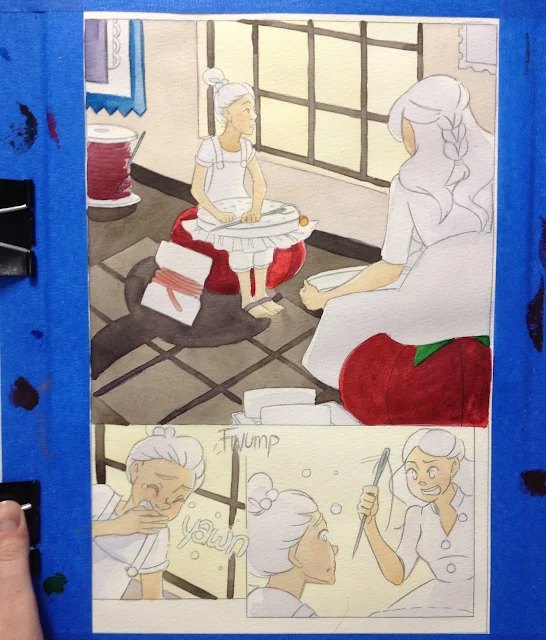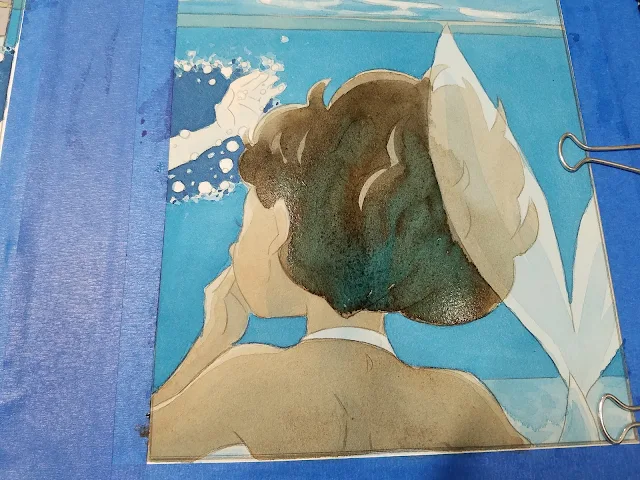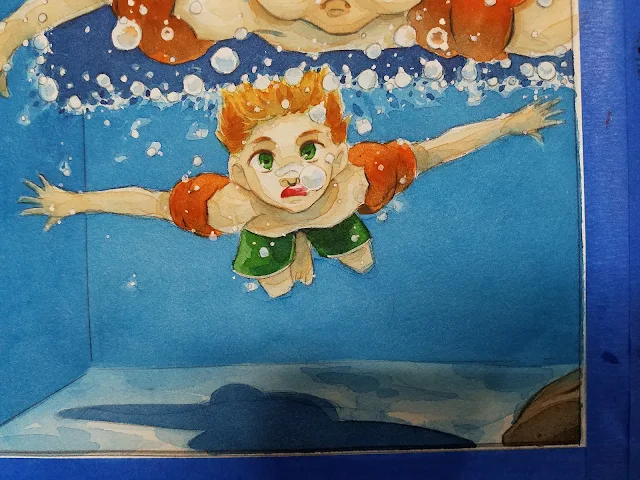Watercolor Basics: Step by Step: Underpainting and Glazing
Today I wanted to talk to you guys about a technique that I've really come to love- Underpainting.
Underpainting can be a useful technique for setting the atmosphere or mood of your watercolor paintings. Unlike acrylic or digital, where you can apply thin layers of color in the final stages of the piece, with watercolor, if you want to influence color, you need to do it early on. While washes are a way to accomplish this, underpainting and underglazing are another method that can be quite useful, especially if you want to use multiple colors.
Underpainting can be used to establish soft glow effects, create hazy underwater scenes, or establish local color shadows.
All of these illustrations utilized underpainting and establishing local color shadows early to help establish the final color and present the mood.
If you enjoy my watercolor illustration, why not check out my watercolor comic, 7" Kara?
7" Kara is now available as a free to read webcomic at 7inchkara.com, or you can pick up the entire first volume, which includes the first four chapters, a bonus comic, bonus illustrations, AND a concept section from the Nattoshop.
And if you enjoy 7" Kara, as well as this blog, make sure you check out Ink Drop Cafe, a comic collective. Ink Drop Cafe is home to many wonderful webcomics that are free to read, as well as some very useful artist resources such as Paper Cat Press, Shooting-Stars, and Grawlix.
Underpainting is a fairly simple concept- it's like a loose monochromatic study of shadow as your first layer of color.
In this illustration, I block in general shadows at the same time I lay down my background wash.
Blocking in shadows at this stage can be a great way to help remind yourself of the lighting you want to use, or to influence colors so everything 'belongs' together.
When painting darker skintones, like for this elf girl, I also underpaint my blush and shadows earlier in, so they appear to 'belong' to the skin. In later stages, I may further refine shadows and blush, but working them in early allows me to achieve more subtle effects.
Example 1
Purpose: To establish that this scene takes place in late afternoon
Example 2
Purpose: To establish that this scene takes place by flashlight
Example 3
Purpose: To establish a uniform underwater tone
In this illustration for the SCWBI Midsouth fall conference illustrator's contest, I spent a lot of painting time just working my underpainting. Using Mijello's beautiful Marine Blue, I was able to work many layers of tone out of just one color- Marine Blue shades beautifully. This is particularly important for setting the scene in a pool.
Although the original tint color was very blue and cool, I still managed to build up vibrant, intense colors by working in contrasts- orange hair, orange floaties, warm magenta mermaid tail.
Example 4
Purpose: To quickly establish shadows
For this commissioned piece, I wanted to capture dappled sunlight. Although there are a few ways that can be achieved, I opted to do my underpainting with blues, to capture the cool shadow of leaves.
Tips for Underpainting and Underglazes
- Warm underglazes are fairly easy to work with- most skintones have a warmish undertone. Cool underglazes are much more difficult, and can have a tendency to neutralize skintones into mud. I've found that mixing my skintones warmer than I normally would can help offset that neutralizing effect without killing the underglaze.
- Working large and loose- with a large round, a large flat, or even a mop, can help your underwash and the subsequent finished painting stay fresh and
- Don't mix your initial colors too saturated- a fairly light wash is usually sufficient
- This technique does not work well with watercolors that use optical brighteners (Sakura Koi, Artist Loft, Reeves, ect) or are naturally opaque (Venetian red, yellow ochre)


























































Comments
Post a Comment